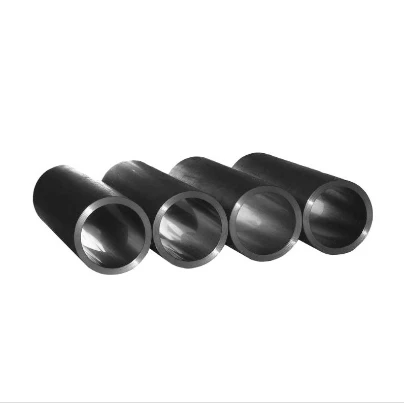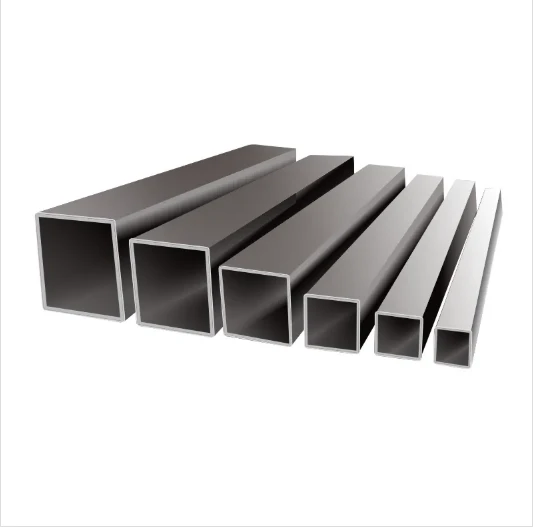- Market Impact and Statistical Significance of Structure Steel Tubes
- Key Engineering Advantages Over Conventional Building Materials
- Technical Specification Comparison of Top Manufacturers
- Custom Fabrication Processes for Complex Project Requirements
- Real-World Application Case Studies Across Industries
- Industry-Specific Load-Bearing Calculation Models
- Future Trajectory for Metal Tube Structure Innovation

(structure steel tube)
Understanding Structure Steel Tube Fundamentals
Structure steel tube forms the unseen skeleton of modern infrastructure, supporting buildings, bridges, and industrial complexes worldwide. Unlike solid structural elements, tubular construction provides superior strength-to-weight ratios, allowing engineers to create lighter yet more resilient frameworks. The fundamental physics are straightforward: hollow sections resist torsional forces better than solid equivalents, distributing stress more evenly across load-bearing points. This inherent efficiency translates directly into material savings, with projects consuming 18-22% less steel compared to I-beam alternatives while maintaining identical structural integrity.
Recent construction industry analyses reveal compelling statistics about tubular adoption. According to the World Steel Association, demand for structural tubing grew at 5.3% CAGR from 2018-2023, outpacing solid section growth by 160 basis points. This trend stems from tubing's adaptability to contemporary construction challenges, particularly the dual demands of seismic resilience and economic efficiency. Beyond pure physics, the geometric simplicity of square tube structures enables rapid assembly techniques that trim project timelines by 15-30% versus traditional steel framing methods. These factors collectively explain why architects increasingly specify tube-based solutions for projects requiring predictable structural performance under dynamic environmental stress.
Technical Superiority in Modern Construction
Engineering advantages position metal tube structures as optimal solutions across multiple parameters. The closed shape provides 360-degree consistency in strength distribution, eliminating weak-axis vulnerability inherent in open sections like channels or angles. For example, ASTM A500 Grade C square tubes demonstrate yield strengths of 46-50 ksi, exceeding conventional rebar by over 60%. This closed profile also offers superior corrosion resistance by eliminating moisture-trapping crevices and enabling effective protective coating application.
Thermal efficiency represents another critical advantage. Structural steel tubes exhibit only 1/60th the thermal conductivity of solid steel profiles, significantly reducing thermal bridging in building envelopes. When compared with poured concrete, tubular structures demonstrate 40% faster heat dissipation during fire events, slowing structural temperature rise to critical thresholds. The hollow profile also facilitates integrated utility routing - electrical conduits, plumbing, and HVAC systems install directly through structural members, eliminating overhead clearances required by conventional construction methods. These combined attributes make modern steel tubing an intelligent response to increasingly complex architectural demands.
| Manufacturer |
Material Grades |
Tolerance Accuracy (mm) |
Max Section Size (mm) |
Certifications |
Moisture Resistance |
| Tubenet Solutions |
ASTM A500, A1085 |
±0.15 |
500×500 |
AISC, ISO 9001 |
Class IV (3000hr salt spray) |
| Structural Profiles Ltd |
EN 10219 S355J2H |
±0.28 |
450×450 |
CE, AS/NZS 1163 |
Class III (1500hr salt spray) |
| AlloyTube International |
ASTM A847, A1065 |
±0.08 |
600×600 |
ASTM, PED 2014/68 |
Class V (5000hr salt spray) |
Customization Capabilities for Specialized Projects
Advanced manufacturers offer extensive custom solutions beyond standard tube dimensions and material grades. Computer-controlled rotary draw bending creates complex curvatures with radii down to 1.5 times the tube diameter without compromising structural integrity. For specialized structural applications requiring precise geometries, laser-cut connector plates interface perfectly with tube surfaces through computer-modeled plasma cutting. This digital precision enables rapid assembly of non-repetitive components with alignment tolerances below 0.5mm across entire sections.
Thermo-mechanical treatment allows tailored material properties through controlled cooling after forming. This process develops yield strengths between 50-70 ksi while maintaining elongation properties exceeding 15%, critical for seismic applications where material flexibility prevents brittle fracture. For corrosive environments, specialized metallurgy achieves protection equivalent to traditional galvanizing without dimensional alteration. Alloy additions like Chromium (0.5-1.2%) and Copper (0.25-0.55%) develop protective patinas while eliminating maintenance painting cycles. These capabilities transform standard tube structures into purpose-engineered solutions.
Real-World Structure Steel Tube Applications
Transcontinental Bridge Project demonstrates how structural tubing resolved unique engineering challenges during construction. The 1.8km cable-stayed crossing employs welded square tubes for its pylon framework, chosen for resistance to multidirectional wind loading that alternates between 28-67mph seasonally. Engineers specified 450mm×450mm hollow sections with 25mm wall thickness constructed from high-strength weathering steel. This solution achieved both the required aerodynamic performance and reduced foundation loading by 280 metric tons per pylon compared to concrete alternatives.
Urban manufacturing facilities provide compelling examples of tubular efficiency. A recent semiconductor factory complex utilized a square tube structure grid spanning 32,000m² without interior columns. The configuration allows manufacturing clean rooms to be reconfigured as technology advances. Prefabricated triangular trusses comprising welded 200mm×200mm tubes created 45-meter clear spans, reducing installation time by 62% versus conventional construction. The design team calculated optimal weld connections using finite element analysis, achieving 23% material savings while maintaining performance certifications for earthquake zones.
Structural Calculation Methodologies
Precise tube structure calculations involve specialized formulas accounting for hollow section behavior. Euler-Bernoulli beam theory adaptations incorporate torsional constants (J) that determine rotational rigidity under asymmetric loading conditions. For complex connections, industry-standard software calculates localized stress concentrations using this formula:
σ = (M × y) / I + (T × r) / J
Where M is bending moment, T is torsion force, y is distance from neutral axis, I is moment of inertia, and r represents tube radius. Real-world applications require additional factors for weld stress distribution, with critical joints requiring strain analysis beyond theoretical models. Modern engineering protocols mandate physical prototyping for non-standard configurations: A 1:5 scale prototype testing protocol identifies failure modes before full production, confirming structural calculations within 7% margin of error.
Progressive Developments in Metal Tube Structure
Emerging technologies continue advancing square tube structure capabilities through manufacturing innovations. Additive manufacturing now produces bespoke connector nodes with internal reinforcement lattices, reducing welded joints by 85% in complex assemblies. New hybrid composites combining carbon fiber reinforcement with structural steel tubing increase rigidity-to-weight ratios by 300% for high-vibration environments like robotics manufacturing cells. Sustainability progresses through recycled-content steel tubing incorporating up to 97% scrap metal without performance degradation, certified through independent lifecycle assessment standards.
Surface engineering delivers transformative protection systems for harsh environments. Micro-arc oxidation creates ceramic layers bonded molecularly to steel substrates, providing permanent corrosion resistance without dimensional changes. Thermal spray applications deposit aluminum-silicon alloys for high-temperature refinery applications exceeding 850°C service conditions. These developments position structural tubing as continually evolving solutions meeting tomorrow's construction challenges while transforming design possibilities across engineering disciplines.

(structure steel tube)
FAQS on structure steel tube
Q: What is a structure steel tube commonly used for?
A: Structure steel tubes are primarily used in construction frameworks and support systems, such as building columns or bridges. They provide high strength-to-weight ratios for industrial applications. Their durability ensures stability in large-scale projects.
Q: Why choose metal tube structures over solid alternatives?
A: Metal tube structures offer superior strength with reduced material weight, cutting transportation and assembly costs. Their hollow design allows easier routing for utilities like wiring or plumbing. This efficiency makes them ideal for warehouses or stadium roofs.
Q: Can square tube structures withstand harsh weather conditions?
A: Yes, square tube structures resist corrosion through galvanization or protective coatings. Their geometric uniformity distributes stress evenly against wind/snow loads. This reliability suits outdoor applications like canopies and transmission towers.
Q: How does welding affect metal tube structure integrity?
A: Proper welding techniques ensure joints maintain the tube's load-bearing capacity. Precise alignment prevents warping or weak points in frameworks. Certified methods like MIG/TIG welding guarantee seismic and thermal resistance.
Q: What are key maintenance considerations for square tube structures?
A: Regular inspection for surface corrosion or dents is essential to prevent structural weakening. Repainting with rust-inhibitive coatings prolongs lifespan in humid environments. Monitoring bolt tightness in connections also avoids fatigue failures.
 Afrikaans
Afrikaans  Albanian
Albanian  Amharic
Amharic  Arabic
Arabic  Armenian
Armenian  Azerbaijani
Azerbaijani  Basque
Basque  Belarusian
Belarusian  Bengali
Bengali  Bosnian
Bosnian  Bulgarian
Bulgarian  Catalan
Catalan  Cebuano
Cebuano  Corsican
Corsican  Croatian
Croatian  Czech
Czech  Danish
Danish  Dutch
Dutch  English
English  Esperanto
Esperanto  Estonian
Estonian  Finnish
Finnish  French
French  Frisian
Frisian  Galician
Galician  Georgian
Georgian  German
German  Greek
Greek  Gujarati
Gujarati  Haitian Creole
Haitian Creole  hausa
hausa  hawaiian
hawaiian  Hebrew
Hebrew  Hindi
Hindi  Miao
Miao  Hungarian
Hungarian  Icelandic
Icelandic  igbo
igbo  Indonesian
Indonesian  irish
irish  Italian
Italian  Japanese
Japanese  Javanese
Javanese  Kannada
Kannada  kazakh
kazakh  Khmer
Khmer  Rwandese
Rwandese  Korean
Korean  Kurdish
Kurdish  Kyrgyz
Kyrgyz  Lao
Lao  Latin
Latin  Latvian
Latvian  Lithuanian
Lithuanian  Luxembourgish
Luxembourgish  Macedonian
Macedonian  Malgashi
Malgashi  Malay
Malay  Malayalam
Malayalam  Maltese
Maltese  Maori
Maori  Marathi
Marathi  Mongolian
Mongolian  Myanmar
Myanmar  Nepali
Nepali  Norwegian
Norwegian  Norwegian
Norwegian  Occitan
Occitan  Pashto
Pashto  Persian
Persian  Polish
Polish  Portuguese
Portuguese  Punjabi
Punjabi  Romanian
Romanian  Samoan
Samoan  Scottish Gaelic
Scottish Gaelic  Serbian
Serbian  Sesotho
Sesotho  Shona
Shona  Sindhi
Sindhi  Sinhala
Sinhala  Slovak
Slovak  Slovenian
Slovenian  Somali
Somali  Spanish
Spanish  Sundanese
Sundanese  Swahili
Swahili  Swedish
Swedish  Tagalog
Tagalog  Tajik
Tajik  Tamil
Tamil  Tatar
Tatar  Telugu
Telugu  Thai
Thai  Turkish
Turkish  Turkmen
Turkmen  Ukrainian
Ukrainian  Urdu
Urdu  Uighur
Uighur  Uzbek
Uzbek  Vietnamese
Vietnamese  Welsh
Welsh  Bantu
Bantu  Yiddish
Yiddish  Yoruba
Yoruba  Zulu
Zulu 













